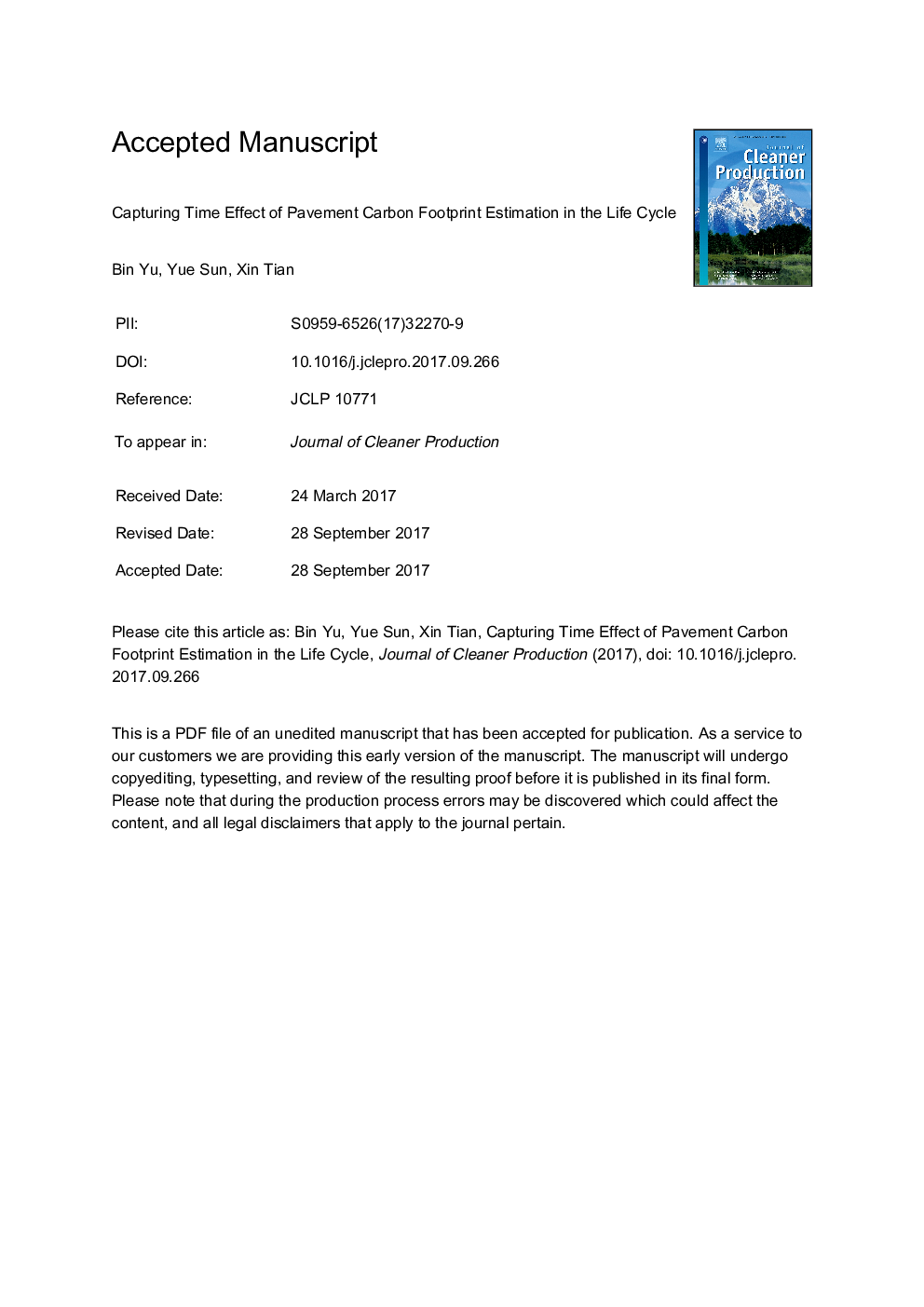| Article ID | Journal | Published Year | Pages | File Type |
|---|---|---|---|---|
| 8100292 | Journal of Cleaner Production | 2018 | 15 Pages |
Abstract
The carbon footprint of pavement in the life cycle is regularly calculated by aggregating the inventory of greenhouse gases (GHGs) at different timings. Comparisons by the nominal values, therefore, ignore the temporal information and may lead to biased estimation of the environmental impact. This study proposed a time-dependent methodology to dynamically assess the global warming potentials (GWPs) incorporating two time parameters, time of evaluation (TE) and time horizon (TH). The former defines the time period of life cycle assessment (LCA) and the latter decides when the GWP is evaluated. Two case studies were conducted. The first case study indicated for design lives (viz. TE) of 20Â y and 40Â y, the GWPs are significantly overestimated by 59.7% and 33.0%; the second case study indicated that 66Â y is the threshold value for TH that brings different policy preference for two emission plans. Together with the concept of “time dominance”, a generic implementation framework was established for the methodology so that users can justify the preferences of alternatives at any THs. The developed methodology can assist decision makers in understanding the real impacts of carbon emission within and beyond pavement life cycle.
Related Topics
Physical Sciences and Engineering
Energy
Renewable Energy, Sustainability and the Environment
Authors
Bin Yu, Yue Sun, Xin Tian,
